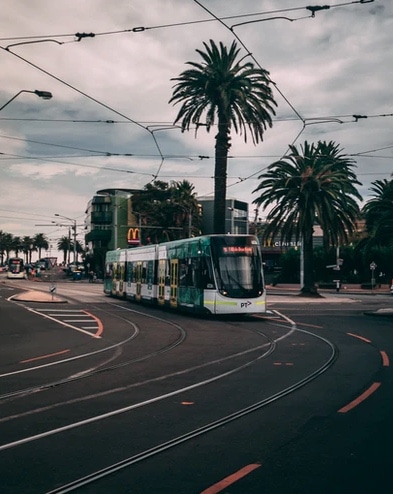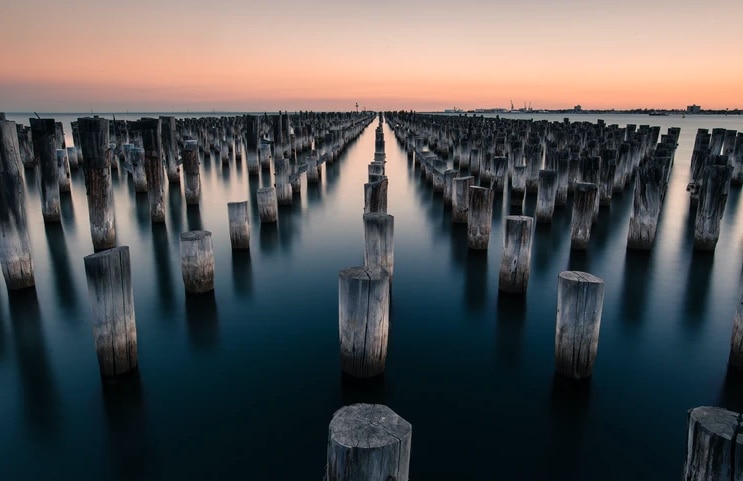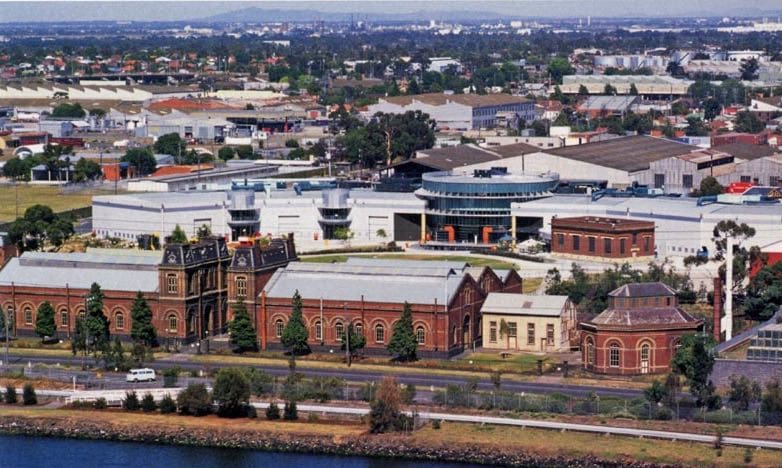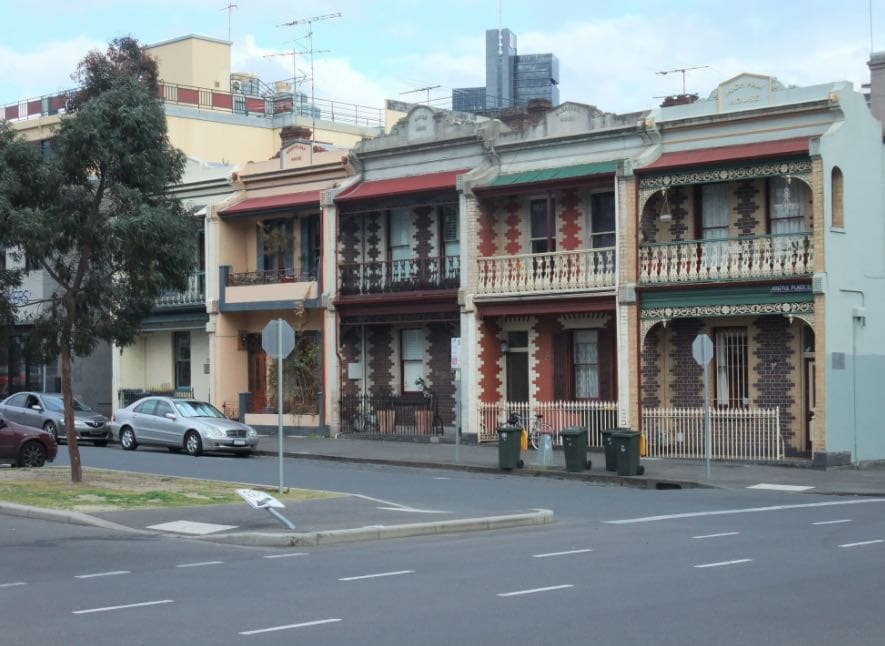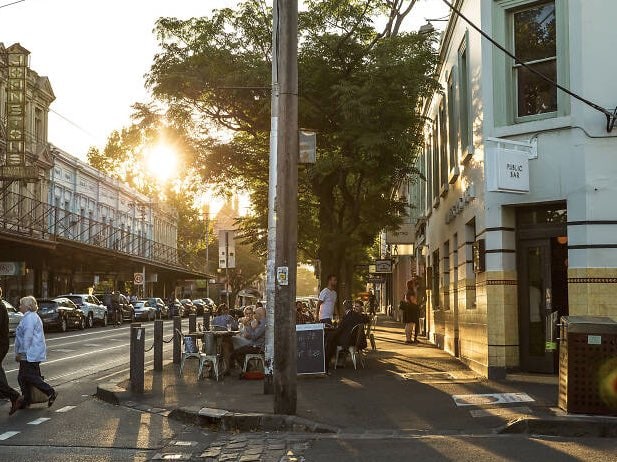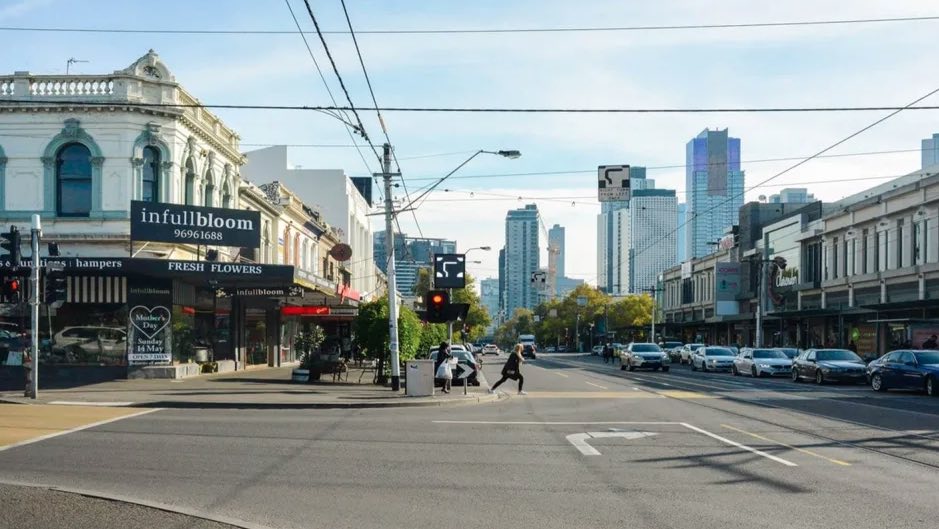Planning to relocate to Australia but can't decide where to settle? To assist you with making this important selection, we will provide a summary of the top Australian cities and towns.
How do you feel about the place you now call home? Are you outgrowing it or just bored with it? Do you wish to relocate but can't decide which of the many suburbs to consider? There are a lot of factors to think about before making a final choice, such as whether or not the lifestyle is a good fit, whether or not there are convenient places to buy and go out, and how accessible everything is.
After Vienna, Austria, Melbourne tops the list of the world's most liveable cities. Given everything that Melbourne has to offer, it's not hard to see why the city is so well regarded.
The weather in the winter may be chilly, just as the summer heat can get rather intense. The city's multicultural atmosphere, the abundance of things to do, and the breathtaking landscape are what really lure visitors to Melbourne.
This study compiles information from the ABS location database, which evaluates suburbs according to a variety of criteria, such as their closeness to the ocean or river, local schools and parks, and the convenience of their position relative to the closest CBD. The article focuses on the inner bayside districts of Melbourne, including the trendy neighbourhoods of St. Kilda West, Albert Park, Port Melbourne, and Seaholme.
Is it any surprise that many foreigners decide to make Australia their new home because of the country's warm weather and easygoing attitude towards life? Therefore, the number of people who have chosen to permanently relocate to Australia is increasing, from young backpackers to older retirees.
The formerly insurmountable task of relocating halfway across the globe to Australia is now becoming more feasible due to falling airfare prices and the proliferation of communication technology like Skype. Having that fresh start in the sun without losing touch with loved ones back home is now a real possibility.
Want to go to Australia and enjoy the good life, but have no clue where to settle down? Stop worrying about it. We've compiled a list of seven fantastic places for expats to settle down, taking into account things like cost of living, accessibility of good schools and colleges, career prospects, and recreational activities. See which locations we recommend below!
St Kilda West
St. Kilda West has been voted the greatest neighbourhood in Melbourne for its convenient location near the ocean and quick commute to the city centre (29 minutes by public transport or 18 minutes by vehicle).
St. Kilda is one of Melbourne's most desirable neighbourhoods because it has everything a family might want—beach, parks, restaurants, and nightlife—in addition to excellent schools. The area's five-kilometer distance from the central business district makes it perfect for families and young professionals alike. A typical home in St. Kilda West costs more over $2 million Australian Dollars.
St. Kilda is a great place to call home if you like being near the water and would also want to be in close proximity to several restaurants, bars, clubs, theatres, and festivals. Over 20,000 people call this suburb home, and it's just 6 kilometres from the city centre. Many of the area's top attractions are also within easy walking distance. Among them are the Art Deco-style Astor Theatre, which holds film festivals and private gatherings, the Palais Theatre, which often stages live music, and the famous Luna Park, with its carnival attractions.
Acland Street and Fitzroy Street are the hubs of the city's public transportation network. Homes for sale and rent in St. Kilda have a wide range of architectural types, from historic cottages to contemporary high-rises. St. Kilda beach is a year-round destination for many people who like participating in water sports. The area also plays home to one of the biggest free festivals in all of Australia, complete with stage performances, community events, and a wide variety of vendors selling all sorts of goods. If you're a fan of greenery and fresh air, you'll be happy to know that there are a lot of parks and gardens to choose from.
Located between the bustling St. Kilda district, the quiet Middle Park, and the tranquil Albert Park Lake, this little coastal community has everything its inhabitants might want, right at their fingertips. To purchase a home in St. Kilda West will set you back a hefty sum, with the median price sitting at $2,177,500. The typical apartment price is $575,000, which is much less than the cost of a house.
Albert Park
Just three kilometres south of Melbourne's central business district, Albert Park may be reached in seventeen minutes by car or twenty-four minutes by public transportation. St Vincent Place Precinct, the premier'square' development in Victoria based on comparable patterns in London, is located here and has Victorian terraces from the 1860s and 1870s clustered around a communal park.
Seventy-three percent of inhabitants in Albert Park live near a school, while eighty-seven percent of residents live within walking distance of a park. The average cost of a home in this area is $2,150,000.
Port Melbourne
The typical unit price in Port Melbourne is $755,000, reflecting the area's transformation from a working-class to middle-class neighbourhood. New apartments may be found in elegant multi-story structures and converted warehouses. Victorian terraces and worker cottages still line the older streets of the suburbs, adding to their heritage appeal despite the typical property price of $1,510,000.
The area of Port Melbourne that was formerly occupied by the working class has been revitalised with the conversion of warehouses into apartments. Thus, it is appealing in its blend of historic and modern elements. The median price of a home is 1.5 million Australian dollars, with flats costing around a million dollars less. It's a great suburb for those who work in the city since it's just five kilometres from the central business district.
The CBD is just five kilometres away, therefore a car trip will take you 17 minutes and public transit will take you 25 minutes. Each and every one of Port Melbourne's inhabitants has access to a park or green space within walking distance, and 51% have schools and/or libraries within a five minute drive.
Seaholme
Seaholme, a bayside suburb of Melbourne, is 13 kilometres south-west of the CBD and can be reached in either 28 minutes by car or 37 minutes through public transportation. Seaholme is a tiny enclave inside the bigger neighbourhood of Altona, thus almost everyone who lives there has easy access to parks and 58 percent live within walking distance of a school.
Of terms of bayside real estate, the $1.1 million average price in Seaholme makes it one of the more reasonably priced communities. The buildings available to you will range from the 1950s to brand new. Seaholme is a suburb of Melbourne, Australia, that is next to the Altona neighbourhood and is located 13 kilometres south-west of the central business district.
The majority of the housing in the area is single-family homes, and styles range from traditional to modern and everything in between. There is a $1,105,000 price tag on the average home in Seaholme.
Spotswood
Spotswood, seven kilometres west of the Central Business District, is another noteworthy inner-city neighbourhood. The close proximity to Port Phillip Bay's beach is a major selling point. It is one of the more reasonably priced areas, with a typical property price of roughly $1 million AUD.
Elwood
Elwood has everything you'd expect from a Melbourne suburb while maintaining a small town atmosphere. The typical home in Elwood, eight kilometres south of Melbourne, will set you back AUD $1.7 million. What you get is a beachy atmosphere and a short commute.
Williamstown
With its convenient location between the city and the ocean, Williamstown has become a popular beachside community where residents may choose between contemporary and historic neighbourhoods. Located nine kilometres from Melbourne's central business district to the south-west, the area provides the impression of being a million miles from the city. Property costs on average are close to $1.5 million.
Williamstown, formerly Melbourne's first seaport, is now a thriving coastal neighbourhood known for its unique blend of historic architecture, Victorian and Edwardian residences, and contemporary architecture. Typical home prices are $1,497,000, while median condo prices are $580,000.
It takes around 28 minutes to drive to the heart of the city from Williamstown, which is located nine kilometres south-west of the CBD, or about 41 minutes to get there through public transportation. Many properties in Williamstown are either near schools (63%), or nearby parklands (98%).
Richmond
In terms of the inner-city areas that may have made the cut, Richmond ranks higher than Carlton and Fitzroy, among others. Richmond, conveniently situated in the central business district, has a mix of terraced streets, renovated warehouses, and modern residences. The Melbourne Cricket Ground, Melbourne Park, AAMI Park, and Holden Park all call this neighbourhood home. The median value of a home in Australia is $1.35 million.
If you want to be near to the city without being in it, Richmond is one of the greatest neighbourhoods in Melbourne to consider. Victoria Street, Bridge Road, and Swan Street provide the city's present population of 26,000 plenty of opportunities to shop, dine, drink, be entertained, take in some art, and learn something new. The neighbourhood is perfect for those who value safety without compromising their quality of life, such as students, families, and others. Both Victorian-era terrace homes and ultra-modern studio flats may be found among the available housing options. Green space enthusiasts will like the abundance of trees and open areas like Burnley Park and Richmond Oval. Several tram lines crisscross the neighbourhood, making it convenient to go to and from various points within the area.
Yarraville
The average home price in Yarraville is an enticing AUD 1 million, and the neighbourhood has a true metropolitan feel. There is a sizable Greek population in this neighbourhood, which is located eight kilometres west of the central business district and makes for a convenient commute. Coffee shops, a varied dining scene, and Melbourne's professional and artistic types have made Yarraville a popular destination.
Carlton
Carlton is an extremely culturally significant neighbourhood located just outside of Melbourne's central business district. The café culture in Melbourne began on Lygon Street, sometimes called the "Italian Precinct," which is lined on both sides with hundreds of eateries. People who wish to learn more about the world and see some great architecture may also go to the nearby Readings Bookstore, Cinema Nova, Royal Exhibition Building, and Melbourne Museum.
Public transportation in Carlton is also first-rate, with trams serving the area from Swanston Street to Carlton North. The Royal Women's Hospital and the Royal Dental Hospital, both of which are conveniently situated nearby, provide similarly high-quality medical care. Students from the surrounding RMIT University and University of Melbourne campuses make up a large portion of the area's apartment-dwelling population of 18,000.
Brunswick
While it is one of Melbourne's older neighbourhoods, Brunswick has recently become a mecca for young artists and art lovers. High numbers of secondary and postsecondary students live in the region because of the convenient access to education they provide. Brunswick has a reputation for being home to some of the best shopping and restaurants in the country, in addition to its bohemian culture and dynamic live music scenes. The walkability and public transportation options of this neighbourhood are top notch. On its western boundary are a variety of open recreational spaces, including Brunswick Park, perfect for eco-conscious people who want to spend time in the great outdoors.
Fitzroy
Fitzroy is one of Melbourne's most populous regions, with over 10,000 people living in under 100 ha. It is located 3 km north-east of the Central Business District. The neighbourhood is well-known for its bohemian atmosphere, thanks to its abundance of live music venues and art galleries. They are drawn instead to the abundance of art studios, commercial art galleries, and street art shows.
Fitzroy has excellent walkability and accessibility thanks to three tram lines. You'll find a plethora of restaurants, bars, and cafes in the area, so you won't go hungry or thirsty. Many different retail and amusement establishments may be found along Brunswick Street. There is a wide variety of homes available for rent or purchase, from Victorian-era terraces to contemporary high-rises.
South Melbourne
The streets of South Melbourne, one of Melbourne's oldest suburbs, have retained its Victorian-era architecture. Located near the South Melbourne Market and with a population of just under 11,000, Clarendon Street is home to a wide variety of shops, galleries, and restaurants. There are four tram lines that go through the neighbourhood, making it quite convenient to get about.
East Melbourne
East Melbourne is one of Melbourne's finest suburbs because it does well on a variety of measures of liveability. Some of Melbourne's most beautiful gardens are in this region, and there are also many excellent restaurants and cultural attractions to enjoy. This encompasses not one, not two, but three parks: Fitzroy Gardens, Treasury Gardens, and the Melbourne Sports and Entertainment Precinct. East Melbourne is also serviced by a number of important tram routes and rail stations.
You can get to the beach and the Yarra River quickly and easily from South Melbourne, one of Melbourne's inner neighbourhoods, which is just two kilometres from the city centre. The typical home price in this suburb is $1,600,000, while the median unit price is $600,000. It is characterised by Victorian architecture and high-rise flats, tree-lined streets and cobblestone bluestone laneways.
The average commuting time for a resident of South Melbourne is about 11 minutes by car or 15 minutes by public transit. In South Melbourne, every home is within a ten-minute walk of a park, and over half are within close proximity to a school.
Conclusion
Melbourne is the world's most liveable city, according to the Mercator indices. Visitors to Melbourne are drawn to the city's multicultural atmosphere and stunning landscape. To help you out, we've compiled a list of our seven favourite places to call home for the long term. See our picks for the best spots, and feel free to add your own! In Melbourne, St. Kilda West has been voted as the best neighbourhood because of its proximity to the ocean and ease of access to the CBD (29 minutes by public transport or 18 minutes by vehicle).
This suburb is home to more than 20,000 people, and it's just six kilometres from the city centre. Albert Park is just three kilometres south of Melbourne's CBD and can be accessed by car in seventeen minutes or public transportation in twenty-four minutes. There are Victorian terraces in the St Vincent Place Precinct that date back to the 1860s and 1870s. Home prices in this area start at $2,150,000. The average price of a house in Elwood, a suburb of Melbourne, is AUD $1.7 million.
Williamstown, Melbourne's first seaport, is now a bustling coastal community. Richmond has a mix of terraced streets and renovated warehouses and is conveniently located in the heart of the financial district. Yarraville's average home price is $1 million, and the neighbourhood has a distinctly urban vibe. Just outside of Melbourne's central business district, Carlton is a culturally significant neighbourhood. Because of the large Greek population in the area, it's easy to get around on foot.
When it comes to art, Brunswick is one of Melbourne's more established neighbourhoods. As far as public transportation is concerned, it's the best. As a result of the region's excellent educational opportunities, a large number of secondary and postsecondary students call this area home. Despite its age, South Melbourne's Victorian-era architecture has remained intact. Shops, art galleries, and restaurants abound on Clarendon Street. Over half of the homes are within a ten-minute walk of a school and a park.
Content Summary
- Melbourne, Australia, is the world's second-most liveable city, right behind Vienna, Austria.
- A growing number of people, ranging from recent graduates and recent retirees, are opting to make Australia their permanent home.
- In Melbourne, St. Kilda West has been voted as the best neighbourhood because of its proximity to the ocean and ease of access to the CBD (29 minutes by public transport or 18 minutes by vehicle).
- One of Melbourne's most desirable neighbourhoods, St. Kilda has everything a family could want—beach, parks, restaurants, and nightlife—in addition to excellent schools.
- More than $2 million Australian Dollars is the average price of a St. Kilda West home.
- In St. Kilda, you'll find a wide variety of restaurants, bars, clubs, theatres, and festivals, making it an ideal place to call home.
- Just six kilometres from the city centre, this suburb is home to more than 20,000 people.
- The median price of a home in St. Kilda West is $2,177,500, which is a significant investment.
- Albert Park is just three kilometres south of Melbourne's CBD and can be accessed by car in seventeen minutes or public transportation in twenty-four minutes.
- Residents of Albert Park are within walking distance of a school and a park, with 73% of the population living near schools and 87% living within walking distance of parks.
- At $2,150,000, the average home price in this neighbourhood.
- Australia's port city of Melbourne
- Port Melbourne's transformation from a working-class to middle-class neighbourhood is reflected in the average unit price of $755,000.
- Australia's median home price is 1.5 million Australian dollars, with flats costing around a million dollars less than the average home in the country.
- In order to get to Seaholme, a Melbourne bayside suburb located 13 kilometres south-west of the CBD, it takes either 28 minutes by car or 37 minutes by public transit.
- An Australian home's average value is $1.35 million, according to the country's Bureau of Statistics.
- Richmond is one of Melbourne's best suburbs to consider if you want to be close to the city without actually being there.
- Yarraville's average home price is $1 million, and the neighbourhood has a distinctly urban vibe.
- Brunswick, Melbourne's oldest suburb, has recently become a hotspot for aspiring artists and art enthusiasts.
- In addition to its bohemian culture and dynamic live music scene, Brunswick is known for its excellent shopping and dining options.
- Over 10,000 people live in less than 100 ha in Fitzroy, one of Melbourne's most populous wards.
- With its abundance of live music venues and art galleries, the neighbourhood is well-known for its bohemian vibe.
- In terms of the quality of life, East Melbourne is one of Melbourne's best suburbs.
- Just two kilometres from the city centre, South Melbourne is one of Melbourne's inner suburbs, where you can easily access the beach and the Yarra River.
- $1,600,000 is the average price of a home in this suburb, while the median price of an apartment is $600,000.
- Attractions include tree-lined streets, cobblestone bluestone lanes, and high-rise flats.
- For residents of South Melbourne, the average commuting time is 11 minutes by car, or 15 minutes by public transportation.
FAQs About Melbourne
- Albert Park. With an average house price of in excess of $2 million AUD, Albert Park is a high-class suburb – and significantly is just three kilometres from the CBD. ...
- St Kilda. ...
- Seaholme. ...
- Port Melbourne. ...
- South Melbourne. ...
- Spotswood. ...
- Elwood. ...
- Williamstown.
Melbourne has a highly diverse economy and population leading to a huge variety of cuisines, attractions, and nightlife but it also benefits from a warm climate and brilliant provision of public services. Melbourne is one of Australia's oldest cities and the original Australian gold rush town.
"Traditional concerns such as price, access to a good school system, nearby shopping and low crime still are the deciding factors that help people choose where they want to live, and (the) majority of clients continue to seek homes near metropolitan and surrounding suburb areas," Taylor wrote in an email.

